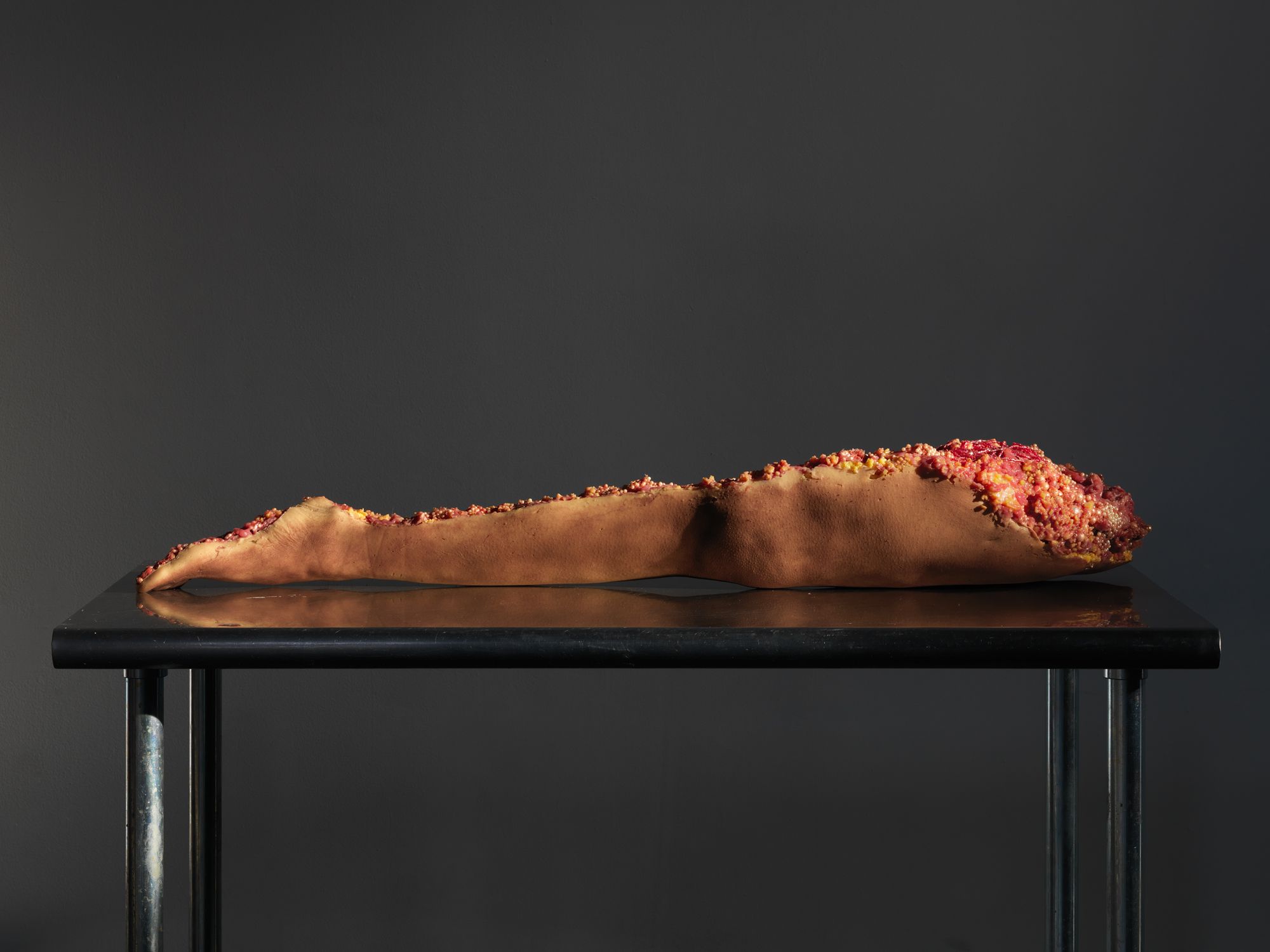
Purge: Doreen Garner
Purge forces us as a collective society to face the reality of racism that J. Marion Sims’s legacy as the “Father of Modern Gynecology” was built upon.
Sims viewed Black people’s bodies as disposable specimens, exploiting and torturing them through experimental procedures for the purposes of medical research. In the 1800s, it was considered unethical to view beneath a woman’s skirt as a physician. When Sims accepted Anarcha, a seventeen-year-old enslaved black woman as a patient, he made her get on all fours atop his operating table while completely nude, and shoved a speculum inside her vagina. He invited crowds of townspeople to “see what no man had seen before.” Sims attempted to close Anarcha’s vesicovaginal fistula over 30 times without anesthesia between 1845 and 1850, despite the fact that he had used the anesthetic ether for his white patients 5 years prior to Anarcha’s first operation.
As part of her exhibition White Man On A Pedestal with Kenya (Robinson), Garner recreated the seven-feet tall statue of Sims in Central Park, encasing it in a thin layer of silicone. Once peeled, his ‘skin’ lies in situ on an operating table. In Purge, Garner will perform a vesicovaginal fistula closure on the Skin of Poneros. Several body cast models featured in her work Rack of those Ravaged and Unconsenting will also assist in this procedure. Using dissection as a means to get to the truth, the symbolic mutilation of Sims’s body on a surgical table seeks to undo his historically praised posture.
This work was made possible, in part, by the Franklin Furnace Fund supported by Jerome Foundation, the New York City Department of Cultural Affairs in partnership with the City Council; and with general operating support from the New York State Council on the Arts.


